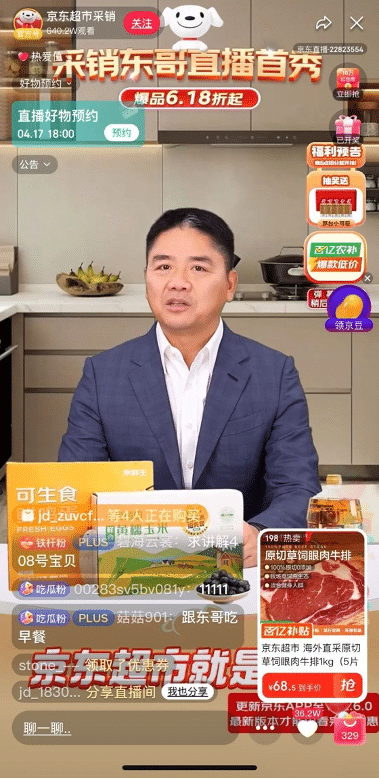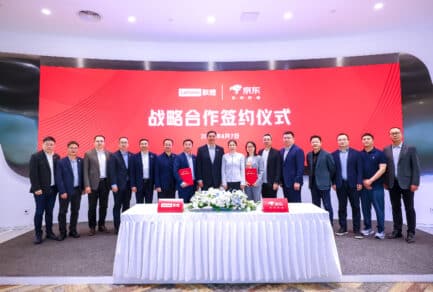Oct 10, 2020|
In Conversation: JD’s Director of FMCG Omnichannel Speaks with IGD
by Kelly Dawson
As China’s retail industry recovers from COVID-19, major opportunities have emerged. Alexander Kremer, director of JD FMCG Omnichannel, spoke with Jiong-Jiong Yu, senior retail analyst at IGD, a UK-based research and training charity which sits at the heart of the food and consumer goods industry, about why supermarkets became the new growth driver for JD.com in the first half of 2020.
When China went into lockdown earlier this year, online shopping spiked—with many consumers buying online for the first time. Now, even as the virus has receded, many shoppers have grown accustomed to the ease of ordering online, particularly when it comes to necessities. “As the overall situation here gets better, a lot of our consumers are sticking to our offerings,” Kremer told Yu.
By offering an expansive range of products and 24-hour fulfillment for more than 90% of offerings—and in some cases 1-2 hours for supermarket items, JD is addressing an important pain point, he said. “Many people living in the big cities don’t have a lot of time, they work long hours and don’t have many days off. So having a convenient offering is very important. If you combine that with our [range of] offerings, that’s what makes people switch and say, ‘Well that really adds something to my overall user experience.”
However, when it comes to fresh produce and other supermarket items, a strictly-online offering is limiting, Kremer said.
“Over time we have seen that there’s a need to cater to different consumer demands in a better way,” he said of JD’s shift to an omnichannel approach, which combines both offline and online offerings. “If you go to a supermarket, you will see that people really like to look at the vegetables, hold them in their hands, see if they’re fresh and then pick the good ones.”
In order to address this need, JD’s omnichannel supermarket concept SevenFresh provides customers with the chance to browse in store, purchasing the exact items they want for immediate delivery to their home—sometimes even within 1-2 hours. If they prefer not to visit the store in person the next time, they can also order directly from the app.
Similarly, JD is working to reshape the previous offline store model in other areas, Kremer said. For example, instead of a traditional home appliance store, a consumer might visit what JD calls a “product experience space,” where they have the opportunity to try out a product in person, and then use the JD app to order the product and arrange home delivery.
However, the race to develop the omnichannel market is not without its challenges, Kremer said. For example, as JD expands its offerings and channels, customers expect special promotions to cut across different channels, which requires additional coordination.
Another way in which the pandemic continues to reverberate is heightened price-consciousness, Kremer told Yu. “We try to cater for that need with really good offerings and promotions that we build together with our brand partners,” he said.
Current conditions may pose challenges, but it also offers enormous opportunity, Kremer said.
As the omnichannel market grows in scope and success, Kremer believes that JD can combine the advantages of offline and online to serve the ever-increasing requirements of consumers. “Potentially in five to ten years, people will no longer talk about, this is an offline retailer, or this is an online retailer. People will only talk about omnichannel retailers because there are not going to be any retailers anymore doing only one or the other.”
Watch the full discussion here.



 Chinese Consumers Race to JD for 2020 Nobel Prize Winning Literature
Chinese Consumers Race to JD for 2020 Nobel Prize Winning Literature



